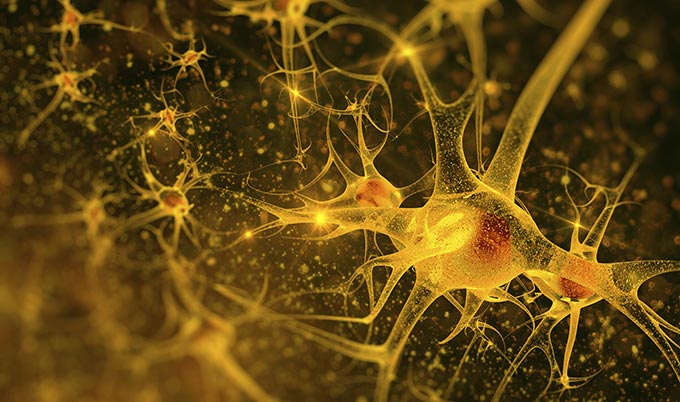The problem with human head transplants
Comment: The problem with human head transplants
Published on: 26 January 2016
Writing for The Conversation, Dr Andrew Jackson explains why joining the brain to an entirely new body has a slim chance of success.

In a 1978 essay, titled Where Am I?, the philosopher Daniel Dennett suggested that the brain was the only organ of which it’s better to be a transplant donor than recipient. Now Italian neurosurgeon Sergio Canavero wants to turn philosophical thought experiments into reality by transplanting the head of Valery Spiridonov, who suffers from a debilitating muscle wasting disease, onto the healthy body of a dead donor.
Beside posing questions about personal identity, there are more prosaic challenges that must first be overcome. The brain would have to be kept alive during surgery by cooling it to 10-15°C, and the immune system would need to be powerfully suppressed to prevent transplant rejection. But the greatest hurdle may be how to restore connections to the spinal cord. Without this connection the brain would have no control of its new body.
In 1970, Robert White at Case Western Reserve University performed a head transplant using monkeys. Without spinal connections the animal was paralysed from the neck down for the brief time it could be kept alive.
Canavero believes the time is right to revisit this controversial procedure, due to recent advances in surgical techniques and scientific understanding. He hopes that his “GEMINI” protocol – combining polyethylene glycol to fuse nerves with electrical stimulation of spinal circuits – will allow his patient to move and even walk following the procedure.
Breakthrough or spin?
Canavero has been criticised for publicising his ideas in the media before releasing peer-reviewed research papers. Only time will tell whether promised experimental results are forthcoming. But, on the basis of current neuroscientific understanding, does the proposal stack up?
Unlike many tissues in our body, the nerves of the spinal cord don’t spontaneously repair themselves after damage. And despite regular media reports hailing new breakthroughs, currently there is no effective cure for the millions of people paralysed by spinal cord injuries each year.
Polyethylene glycol is among a growing list of treatments (including drugs, stem cells and gene therapies) showing promise in pre-clinical studies, but the path to real-world applications is notoriously tricky.
Experiments in animals such as rats and mice are essential to developing new therapies, but important differences must be borne in mind when extrapolating to human treatment. Given sufficient retraining, rodents – even with completely severed spinal cords – can learn to walk again, because much of their circuitry for locomotion is located below the injury.
In contrast, the brains of primates such as monkeys and humans are more directly involved in guiding movements. As a result, the recovery experienced by people with complete spinal injuries is much more limited.
For those that live with spinal cord injuries, there are some reasons for cautious optimism. A US trial of epidural stimulation is reporting impressive results using a small pacemaker-like device to send electrical signals into the spinal cord. Participants in the trial have been able to move their legs and even support their own weight while standing.
The mechanisms underlying these improvements are not well understood, but stimulation seems to reawaken the spinal cord and may allow it to respond to residual connections from the brain that have survived injury. More speculatively, it may in future be possible to control stimulation directly from electrical signals recorded from the brain using brain-computer interface technology.
Although epidural stimulation is a promising line of research, it is being trialled in a select group of patients and is still far from a magic cure. So, if we can’t yet mend an injured spinal cord, what hope do we have for joining the brain to an entirely new body?
The capacity for rewiring is not limitless
While most spinal injuries are caused by traumas that bruise or tear the nerves, a transplant surgeon could sever the cord cleanly with a scalpel blade. But weighed against this small advantage is the staggering complexity of joining two separate neural circuits that have neither developed nor functioned together before.
Even if the spinal cord could be reconnected, would the patient ever learn to control the new body? The brain has a remarkable capacity for rewiring itself, especially as we develop during childhood. But the “plasticity” of the adult brain has limitations.
Many amputees experience vivid and often agonisingly painful “phantom” sensations from where a lost limb used to be, even years after amputation. This suggests that our mental representation of ourselves – our body schema – may not easily adjust to changes in our own bodies, let alone get used to someone else’s entirely.
Perhaps transplant tests with monkeys may in future provide convincing support for applying this surgery in patients, although such experiments would certainly not be allowed by the strict regulations that govern animal research in the UK. Nor should they be at present, given the severity of the procedure and slim chance of success.
The media love stories about maverick scientists fighting the establishment. But science most often progresses in careful, incremental steps that are published and scrutinised in peer-reviewed journals. The philosophers can speculate whether it is better to be the donor or recipient of a brain transplant. But as a neuroscientist, until we have the technology to reconnect the spinal cord, neither is an appealing prospect in reality.
Andrew Jackson, Wellcome Trust Senior Research Fellow, Newcastle University
This article was originally published on The Conversation. Read the original article.



